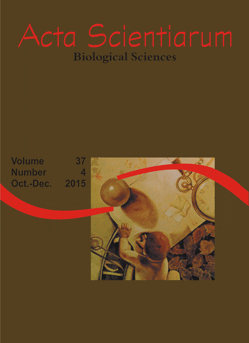<b>Colonization by Chironomidae larvae in decomposition of <i>Eichhornia azurea</i> (Swartz) Kunth in an Amazonian lake in Brazil
Abstract
Few studies have investigated the colonization of macroinvertebrates during macrophyte decomposition. The goal of this work was to study the colonization process of Chironomidae larvae during the decomposition of Eichhornia azurea in a lake in the southern state of Amazonas, Brazil from August to October 2012. Multiple regression analysis identified a significant loss of macrophyte biomass during the 72 days of the experiment. Six genera were identified: Ablabesmyia, Chironomus, Goeldichironomus, Labrundinia, Polypedilum, and Tanytarsus. The Canonical Correspondence Analysis conducted between the densities of Chironomidae larvae and biotic and environmental factors showed that Chironomus and Goeldichironomus larvae tolerated the temperature, dissolved oxygen concentration, and macrophyte biomass of the lake. Chironomus and Goeldichironomus were the densest genera, especially in the last days of the experiment. We conclude that the tolerance of some Chironomidae genera, such as Chironomus, may have contributed to their success in colonization because macrophyte decomposition significantly changes the chemical composition of water. In addition, we identified a significant increase in the E. azurea decomposition rate in Lake Paraíso compared to other lakes at greater latitudes, suggesting a direct effect between the temperature and the macrophyte decomposition rate.
Downloads
DECLARATION OF ORIGINALITY AND COPYRIGHTS
I Declare that current article is original and has not been submitted for publication, in part or in whole, to any other national or international journal.
The copyrights belong exclusively to the authors. Published content is licensed under Creative Commons Attribution 4.0 (CC BY 4.0) guidelines, which allows sharing (copy and distribution of the material in any medium or format) and adaptation (remix, transform, and build upon the material) for any purpose, even commercially, under the terms of attribution.
Read this link for further information on how to use CC BY 4.0 properly.












1.png)




3.png)













